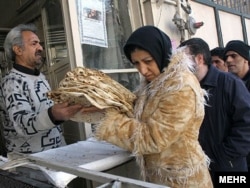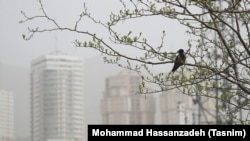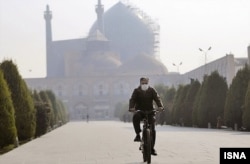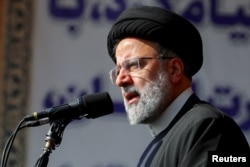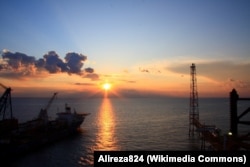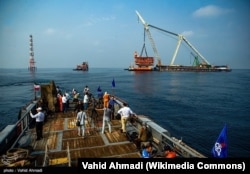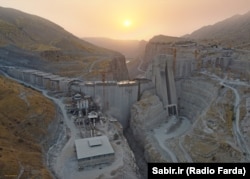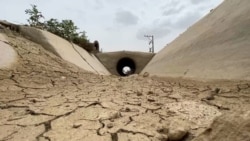Economy
Iranian Retirees Protest Living Conditions, Lack Of Pension Increases
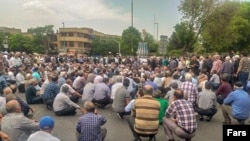
Iranian retirees have renewed protests in several major cities across the country, reiterating calls for more social and economic freedoms, as well as regular adjustments to their pensions in line with inflation as the cost of living soars amid international sanctions.
According to reports on social media outlets, the protests took place on July 19 outside the pension fund offices and provincial buildings in cities including Kermanshah, Yazd, Shiraz, Hamedan, Ardabil, Karaj, Qazvin, and Sanandaj.
Images and videos shared online showed protesters holding placards calling for the release of imprisoned trade activists and other political prisoners.
Participants also voiced their frustrations over the failure of the country's leaders to improve living conditions with slogans such as "Incompetent government, shame, shame," "We won't rest until we secure our rights," and "Enough of promises, our tables are empty."
The demonstrations by retirees come after the government recently announced a decision to consolidate 18 different pension funds into one in an attempt to address a shortfall of 3,000,000 billion Iranian Rials ($6 billion) and rising debts.
For more than a decade, the Iranian government has been staving off the crisis in the pension funds through various measures such as allocating shares, transferring factories, and even gifting land to offset debts.
Despite these efforts, official reports indicate that out of the 18 pension funds in Iran, 17 were either bankrupt or teetering on the brink of bankruptcy.
Iran's economy has been ravaged by U.S. sanctions, leading to a surge of protests in several cities. A report from the Labor Ministry indicated a significant increase in Iran's poverty rate, growing 50 percent in 2021 compared to the previous year.
The protests on July 19 weren't limited to pensioners with a series of separate protests occurring across the country, showing the depth of anger following years of what demonstrators say is negligence and corruption in the public sector.
Disabled individuals demonstrated outside Tehran's city administration building, while teachers rallied in Shiraz, and workers from the Haft Tappeh Sugar Cane Complex held a protest outside the Development and Ancillary Industries Company in Ahvaz.
Unrest has rattled Iran since last summer in response to declining living standards, wage arrears, and a lack of welfare support. Labor law in Iran does not recognize the right of workers to form independent unions.
Adding to the dissent, the death in September of 22-year-old Mahsa Amini in police custody for allegedly wearing a head scarf improperly breathed new life into the demonstrations, which officials across the country have tried to quell with harsh measures.
Written by Ardeshir Tayebi based on an original story in Persian by RFE/RL's Radio Farda
Iran Warns Against Unloading Iranian Oil From Seized Tanker
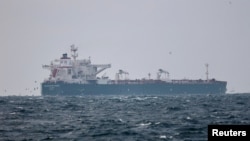
Iran would retaliate against any oil company unloading Iranian oil from a seized tanker, the Revolutionary Guards' navy commander, Alireza Tangsiri, said on July 20, according to state media. In April, the U.S. confiscated Iranian oil on a tanker at sea in a sanctions enforcement operation, according to a maritime security firm. Tangsiri added that Tehran would hold Washington responsible for allowing the unloading of the tanker's content. Sources familiar with the matter who declined to be identified had said Washington took control of the oil cargo aboard the Marshall Islands tanker Suez Rajan after securing an earlier court order. To read the original story by Reuters, click here.
- By RFE/RL
In Uganda, Iranian President Attacks West On LGBT Rights
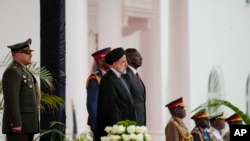
Iranian President Ebrahim Raisi on July 12 launched into a condemnation of Western attitudes on homosexuality during a visit to Uganda, which has just introduced some of the harshest anti-gay laws in the world.
"The West today is trying to promote the idea of homosexuality and by promoting homosexuality they are trying to end the generation of human beings," Raisi said.
Ugandan President Yoweri Museveni signed a law in May making "aggravated homosexuality" a capital offense and same-sex relations punishable by life in prison, triggering outrage among human rights groups, the United Nations, LGBT activists, and Western powers.
Raisi has begun a rare visit to Africa as his country, which is under heavy U.S. economic sanctions, seeks to deepen other partnerships around the world. Raisi's visits to Kenya and Uganda on July 12 are the first to the African continent by an Iranian leader in more than a decade.
He will also visit Zimbabwe on his trip to Africa, which he described as a "continent of opportunities" and a great platform for Iranian products. "None of us is satisfied with the current volume of trade," he said.
With reporting by AFP and AP
Former Iranian Welfare Official Warns Of Looming 'Catastrophe' Over Malnutrition
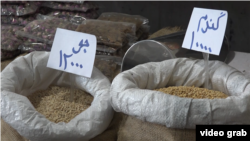
A former official from Iran's Ministry of Social Welfare has issued a stark warning about a looming "humanitarian catastrophe" after fresh data showed more than half of all Iranians are suffering from malnutrition.
Hadi Mousavi Nik, the former director-general of the Social Welfare Studies Department at the ministry, said that 57 percent of Iran's population is malnourished and does not receive at least 2,100 calories per day, the amount set by the World Bank as the minimum daily requirement for refugees in camps.
Among the malnourished population, 14.5 million are children, including 10 million under the age of 12, she said, far above previous official estimates that said the figure for children was less than 1 million.
Iran's economy has been wracked by Western sanctions over its human rights record and nuclear program, along with a lack of rainfall that has hit the agriculture sector hard.
That combination of factors has driven up prices, especially on protein-rich foods such as red meat.
A report from the Labor Ministry indicated a significant increase in Iran's poverty rate to around 50 percent in 2021 compared with the previous year.
Unrest has rattled Iran since last summer in response to declining living standards, wage arrears, and a lack of welfare support. Labor law in Iran does not recognize the right of workers to form independent unions.
Adding to the dissent, the death in September of 22-year-old Mahsa Amini in police custody for allegedly wearing a head scarf improperly breathed new life into the demonstrations, which officials across the country have tried to quell with harsh measures.
Written by Ardeshir Tayebi based on an original story in Persian by RFE/RL's Radio Farda
- By RFE/RL
New U.S. Sanctions Take Aim At Company Responsible For Internet Censorship In Iran
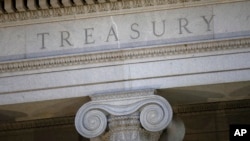
The United States has issued fresh sanctions targeting Iranian technology company Arvan Cloud, two employees of the company, and an affiliated firm for their roles in helping Tehran censor the Internet in the country, the Treasury Department said.
Arvan Cloud, a web-hosting service and content delivery network, has played a prominent role in the Iranian government’s development of the National Information Network (NIN) infrastructure, a censored version of the Internet under the control of Iranian authorities, the department said in a statement on June 2.
"The Iranian government has regularly used Internet restrictions and the throttling of Internet speeds to suppress dissent, surveil and punish Iranians for exercising their freedom of expression and assembly both online and offline," the statement said.
The department said Iranian authorities have sought to move domestic Internet traffic to the NIN in an effort to mitigate lost economic activity incurred when it imposes Internet restrictions to suppress dissent.
These restrictions have increased amid widespread protests over deteriorating living conditions and other grievances that erupted after the death of 22-year-old Mahsa Amini last year in police custody for an alleged infraction of the country's mandatory head-scarf law.
Arvan Cloud helped lay the groundwork for the NIN’s integrated cloud network infrastructure and in contracts with the Ministry of Information and Communications Technology, it has “explicitly agreed to provide interception for the government, allowing Iranian authorities to control and censor incoming and outgoing traffic and surveil data on the servers,” the Treasury Department said.
It also said Arvan Cloud has a close relationship with Iran's intelligence services and its executives are either current or former affiliates of Iranian intelligence.
Brian Nelson, the undersecretary for terrorism and financial intelligence, said free and unrestricted access to information is a fundamental right of all peoples, including in Iran.
“The United States is committed to holding accountable those who seek to undermine freedom of expression and suppress dissent, and to call out regimes who deny their citizens this right,” Nelson said in the Treasury's statement.
The individuals designated for sanctions are Pouya Pirhosseinloo and Farhad Fatemi, co-founders of Arvan Cloud. The sanctions also target ArvanCloud Global Technologies LLC, an affiliate based in the United Arab Emirates.
The sanctions freeze any property in U.S. jurisdiction owned by the individuals and entities designated. They also bar U.S. citizens from any dealings with the individuals and entities.
With reporting by Reuters
Iranian Retirees Join Workers In Fresh Wave Of Protests Over Pensions, Living Conditions
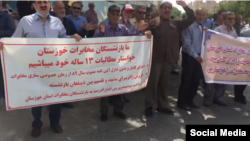
A new wave of protests is sweeping across Iran as retirees and workers demonstrate against harsh living conditions and skyrocketing inflation in the country, which has been hit hard by international sanctions over the government's nuclear program and its suppression of human rights.
Demonstrations took place on May 29 in numerous provinces, including Khuzestan, Lorestan, Hormozgan, Chaharmahal and Bakhtiari, Kermanshah, Kurdistan, Ilam, West Azerbaijan, Khorasan Razavi, Mazandaran, Fars, and Isfahan.
Telecommunications retirees were a large part of the protesters, while in the southern Iranian city of Bandar Abbas, workers from the Maad Koush factory, a critical supplier to the Hormozgan Steel Company production chain, joined in as they continued into the third day of their strike despite threats of dismissal and arrest.
Meanwhile, the Nepheline Syenite Complex workers' strike in the city of Kalibar, East Azerbaijan Province, extended into its second day.
Government officials have described the complex in Kalibar as the Middle East's sole nepheline syenite mineral-rock-processing unit, a critical material for aluminum, glass, plastic, and rubber ceramics production.
Worker representatives have warned officials that if their "indifference to workers' demands" continues, the government will be "responsible for any subsequent incident."
In recent weeks, social-security retirees and telecommunications retirees have held numerous gatherings to voice their anger over deteriorating living conditions, the issue of fixed pensions in a high-inflation environment, and the overall mounting costs of living.
The retirees also claim that part of their legitimate benefits, including the payment of welfare and supplies, have been cut off for some time without explanation. They are demanding they be fully compensated.
In the southwestern city of Ahvaz, protesters gathered outside Khuzestan Province's main Telecommunications Company building on May 29, voicing their grievances with slogans like "Injustice and oppression are enough, our tables have nothing on them."
Iran's economy has been ravaged by U.S. sanctions, leading to a surge of protests in several cities. A report from the Labor Ministry indicated a significant increase in Iran's poverty rate, growing 50 percent in 2021 compared to the previous year.
Unrest has rattled Iran since last summer in response to declining living standards, wage arrears, and a lack of welfare support. Labor law in Iran does not recognize the right of workers to form independent unions.
Adding to the dissent, the death in September of 22-year-old Mahsa Amini in police custody for allegedly wearing a head scarf improperly breathed new life into the demonstrations, which officials across the country have tried to quell with harsh measures.
Written by Ardeshir Tayebi based on an original story in Persian by RFE/RL's Radio Farda
- By AFP
Winds Of Change: Iran's Traditional Wooden Boats Face Uncertain Future
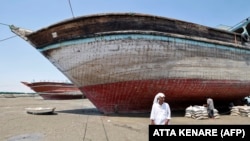
In their golden age, Iran's lenj vessels were used to transport goods such as spices, dried fish, and textiles from the Persian Gulf to East Africa and the Indian subcontinent. But as modern ships take their place, these hand-built boats now face an uncertain future.
- By AFP
Iran Arrests Eight Over Workers' Strike At Southern Gas Field
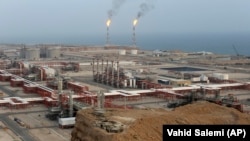
Iranian authorities have arrested eight people for "leading" a workers' strike at a key gas site in the south of the country, local media reported on May 14. "Eight main leaders of the workers' strike in the South Pars projects have been arrested by the intelligence services," Akbar Pourat, the deputy local governor, was quoted as saying by Tasnim news agency. Some 40,000 people are employed at the South Pars/North Dome mega-field, the largest known gas reserve in the world, which Iran shares with Qatar.
Lost In Transactions: Afghans Living In Iran Left Stranded By Lack Of Access To Bank Cards
!["In the subway, you need to pay with a bank card. They don't accept cash," an Afghan said.. "Some [Iranians] buy tickets for us [in exchange for cash], but others don't."](jpg/d3d69280-6188-422c-bb80-06aa4ca94f3a_cx0_cy6_cw0_w250_r1_s.jpg)
Iran is implementing modern new payment systems to make it easier for its citizens to use public transportation and get their subsidized daily bread. But Afghans living in the country say they are being left behind due to immigration policies that restrict their access to bank cards.
Afghan migrants are complaining that not being able to have bank cards makes it difficult to use city subways, access mobile phone services, and even to get their daily bread.
Mirwais, who has lived in the southwestern city of Shiraz for over 20 years, says the limitations add to the "pressure" he and other Afghans face every day in Iran.
"All the migrants face this," said Mirwais, who gave only his first name in a telephone interview with RFE/RL's Radio Azadi. "Whether in Shiraz, Tehran, or Isfahan, migrants suffer and are under pressure all over Iran."
Digital Divide
The lack of access to basic services can be traced to requirements imposed years ago that effectively prevent many members of Iran's large Afghan community from obtaining bank cards. While Iran has made the leap to Internet banking, online purchases, and digital card readers, migrants must still go in person to a bank to make withdrawals or send wire payments.
Some Afghans living in Iran say they cannot open a bank account at all, while others complain that they face limits on the amount they can withdraw. Getting mobile phone service has also been made difficult due to Iran's crackdown on unregistered SIM cards.
The problem has been compounded by the need for bank cards to purchase transportation tickets or to apply for new smart cards introduced for purchasing subsidized goods from bakeries, meaning Afghans have to rely on workarounds just to put food on the table or travel around.
Mohammad Amiri, 26, has lived in Tehran with his wife and child for more than two years, but still faces difficulties carrying out everyday tasks.
"In the [Tehran] subway, you need to pay with a bank card. They don't accept cash," he told Radio Azadi. "Some [Iranians] buy tickets for us [in exchange for cash], but others don't."
"Unfortunately, as Afghan migrants, we don't have the right to have a bank card or even a SIM card. This is a real problem for us," he said.
Mirwais expressed the same frustration, saying that if fellow passengers are not willing to purchase electronic passes for them, he and other Afghans must take taxis at much greater expense.
He said the same goes for bakeries, which recently introduced a new "smartization" system that uses special cards that allow customers to automatically deduct their purchases from a state-subsidized account.
The initiative has been touted by officials as a way of more effectively distributing subsidies, easing skyrocketing prices for flour and bread, and eliminating graft.
'They Make It Hard'
Officials have denied they are excluding anyone and have pledged to fix any difficulties stemming from the new systems, saying that there are alternatives to using bank cards and that the Tehran subway allows Afghan nationals experiencing payment issues to ride for free.
But Afghans who spoke to Radio Azadi said the reality is much different.
"My wife offered the baker money six times, but the baker would not accept it, saying she must bring a bank card," Mirwais said this week. "There are some [Iranians] who offer their cards, one in 1,000. They give their cards and take cash to resolve the problem."
"We go to the bank, they don't accept our passports; we go to buy a SIM card, they don't accept our passports," Mirwais said. "It should be easy to use the subway, but the government makes it hard for migrants."
Millions Of Migrants
An estimated 3 million Afghans, many of them undocumented refugees and migrants, live in Iran. Many have complained of widespread discrimination and abuse.
More than 1 million Afghans crossed into Iran in 2021, often en route to third countries, as the Taliban advanced and eventually seized power in Afghanistan that year. Iranian authorities have reportedly deported more than half of recent arrivals.
Many Afghan migrants in Iran moved to the Islamic republic decades ago amid political upheaval and war. Iran has also long been a destination country for Afghan migrant workers seeking seasonal jobs.
Migrants are officially divided into two categories in Iran: those who are documented and have passports, residency, or immigration cards, and the undocumented. The latter group includes Afghans who never held passports in their home country.
Iran provides one-year residency permits for more recent arrivals, and has said that full access to banking and social services, including health insurance, are available to all migrants who officially register their names and information with the Interior Ministry. More than 2 million foreign nationals have complied and are on the books, according to the ministry.
But mired in its own economic crisis amid skyrocketing inflation and rising food prices, Iran has often expressed alarm at the number of undocumented Afghans on its soil.
Undocumented Afghans like Amiri have little hope of gaining access to basic services, and even those who have residency permits can only hold bank accounts for the one-year period of their stay.
"We can't open a bank account because we don't have any [identity] documents with us," Amiri said.
"We applied at several banks, but they've told us that we must wait. So, we're just waiting to see what will happen. Having a bank card is essential for us, for our daily lives."
Written by Michael Scollon based on reporting by Freshta Negah of RFE/RL's Radio Azadi
Iran's Environmental Standards, Polluted Reality Mix Like Oil And Water
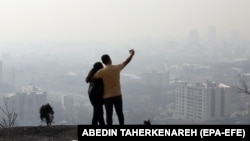
National Clean Air Day was not a cause for celebration this year in Tehran, where many residents were shuttered in their homes for their own safety to avoid exposure to the Iranian capital's infamous and deadly smog.
In the run-up to January 19, the day Iran dedicates to promoting air quality, students were prevented from attending universities and schools in the city of nearly 9 million people, the standard procedure when air pollution levels exceed safe levels.
Local officials decried the fact that there had only been two days of clean air recorded over the previous 10 months and called for more to be done to address the crisis.
And amid the criticism, which targeted the authorities' use of dirty mazut fuel oil to provide heat and power during a brutal cold snap, the national government presented a draft budget that would cut expenditures for combating air pollution by half.
Conflicting Approaches
The government's response highlighted the conflicting approaches and decades of misguided environmental policies that have contributed to Iran's air-pollution crisis, rendering toothless strict regulations passed in 2017 with the aim of tackling the issue.
As debates raged over government inaction, the Interior Ministry and Education Ministry backed the idea of lowering the air pollution index threshold that keeps students out of school.
Parliament passed the new budget in February, cutting funding for implementing the country's Clean Air Act from a mere $8 million to $4 million while emphasizing economic growth.
And answering calls for the Clean Air Act's strict standards to be enforced, the Tehran Prosecutor's Office pressed criminal charges against five unidentified bureaucrats who were in step with the government's pursuit of increased development and industrial production.
The management-level personnel, who work for various ministries that oversee Iran's environmental protection efforts and lucrative petroleum sector, stand accused of failing to adhere to standards set in the country's Clean Air Act on vehicle emissions and gasoline quality, and for failing to limit pollution from mazut-fueled industrial plants.
'Denying People A Breath'
Tehran and other major Iranian cities have long been among the world's worst when it comes to air pollution. Iran overall ranks sixth in the world in terms of greenhouse gas emissions, according to the Global Carbon Atlas, having more than doubled CO2 emissions in the past two decades.
"Tehran is one of the most polluted cities in the world, and air pollution is estimated to contribute to thousands of premature deaths each year" across the country, Iran environmental expert Shirin Hakim told RFE/RL in written comments. "Air pollution has led to the closing of businesses and schools, impacting economic productivity, and has contributed to a variety of health conditions, including respiratory conditions and cancers."
Iranian media and officials have decried the steadily rising levels of deadly sulfur dioxide recorded over Tehran in recent years, while experts at the air pollution research center at Tehran University have estimated that 40,000 premature deaths per year can be attributed to the smog and dust that fouls Iran's air.
Lawmaker Mohammad Reza Sabaghian put it simply in comments ahead of Clean Air Day, saying: "We are denying the people a breath."
Outdated cars and motorcycles burning low-quality fuels are frequently singled out as the major reasons for the air pollution that has plagued Tehran and other major cities, but they are far from the only ones.
"The overexploitation of water resources and climate change are contributing to the desertification of farmland and the drying up of bodies of water, which has contributed to dust and sandstorms that also diminish air quality," said Hakim, senior fellow at the Berlin-based Center for Middle East and Global Order (CMEG) and fellow at the Atlantic Council's GeoEconomics Center.
Accelerated development and industrial activity outside urban centers have also contributed to increased emissions, Hakim said, as well as the rising migration of people to cities, which adds to the use of vehicles, dirty fuels, and acid rain and other pollutants.
Clean Air On Paper
The Clean Air Act, introduced in 2017 under then-President Hassan Rohani, was supposed to be the road map for solving Iran's environmental problems.
Among other things, the law targeted the use of mazut by greatly lowering the limits of sulfur allowed in fuel oil. It also called for the country's aging transportation network to be overhauled and required the Oil Ministry to produce higher standard and cleaner-burning "Euro 4" gasoline, diesel fuel, kerosene, and other petroleum products.
Punishments and fines were set for industries and individuals that violated the regulations. But when natural gas shortages hit during the hard winter months this year, the Clean Air Act
was cast aside.
Faced with public anger over natural gas shortages that left many homes without heat and factories without power, officials gave the green light to burning more mazut to fuel thermal stations and industrial plants. The move sent plumes of noxious smoke into the air in Isfahan and other major cities, as well as in Tehran, despite official insistence that mazut was not used.
Officials in Isfahan demanded details of the government's decision, according to state news agency IRNA, declaring the burning of mazut a "serious danger" to human health. United Nations special rapporteur on human rights and the environment David Boyd called on Iran to halt the practice, declaring it a human rights violation.
Official Oil Ministry reports viewed by RFE/RL's Radio Farda showed that the country intensified its use of mazut in December to 38.5 million liters per day, a 22 percent increase, and 42 million liters per day in January. The report also showed that the production of mazut with a sulfur content of 3.5 percent -- up to seven times higher than the level allowed under the Clean Air Act -- rose significantly, and that only one-third of the gasoline produced in the country was of the required Euro 4 standard.
In response to the outcry, Iranian officials said the air pollution problem would be alleviated in the future by the increased production of natural gas and improvements to infrastructure, which have been stymied by international sanctions that have denied Iran access to foreign technologies.
Ali Salajegheh, the head of Iran’s Department of Environment, also remained bullish about the Clean Air Act, telling IRNA in January that the implementation of the legislation would be accelerated by the increase of "green tax" allocations separate from the state budget. Salajagheh did not provide a specific figure, only saying that 20 percent of the green taxes would be earmarked. Green taxes are those levied on activities that are deemed harmful to the environment.
The environment was seen as one of the biggest challenges faced by President Ebrahim Raisi when he took office in 2021. During his campaign, Raisi presented an "environmental charter" promising sustainable development and environmentally friendly policies as key components to Iranians' right to a "healthy environment, clean climate, and pollution free life."
But such promises have fallen short. Iran has increasingly turned to oil and gas production to pull it out of its extended economic crises. In addition to the increased production of mazut and other dirty fuels, Tehran has exempted some automotive manufacturers from installing air filters until international sanctions imposed over Iran's nuclear program are lifted.
Raisi's presidency has been marked by protests in areas of the country hit hard by drought and the scarcity of water needed to sustain agriculture, despite the continued and contentious construction of new dam projects.
“Failed water governance has fueled such unrest in the past, according to Hakim, and "is contributing to desertification and the drying up of rivers and lakes that have contributed to economic and social ramifications."
The government has also failed to submit a carbon-cutting plan related to the Paris Agreement on climate change since 2015. Officials have said that Iran will not ratify the accord until international sanctions are lifted, arguing that access to modern foreign technology is key to reducing emissions.
Raisi stated that the goal of the government’s new budget was economic growth, reducing unemployment, and lowering skyrocketing inflation. The budget, 40 percent bigger than the last, is dependent on the export of 1.4 million barrels of oil per day despite international sanctions that hamper the country's ability to trade.
The cuts to expenditures on fighting air pollution "may have been driven by heightened social and economic tensions in the country," said Hakim. "The Islamic republic has routinely prioritized economic gains over social and environmental concerns."
Iranian Oil Workers Join Labor Unrest Over Wages, Living Conditions
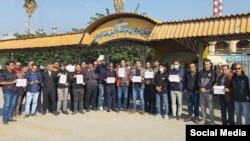
Workers from several industries in Iran, including the oil sector, continue to strike in protest of inadequate wage increases and deteriorating living conditions amid spiraling inflation and a widening gap between household income and expenses.
Strikes have been ongoing in several cities for months, with workers from petrochemical, mining, and steel industries demonstrating as well.
In the oil industry, workers have called for a 79 percent wage increase for contract workers in both industrial and nonindustrial factories, almost three times the amount offered by the government.
The workers have rejected the proposal, made by Iranian President Ebrahim Raisi's government, which also pledged to curb inflation this year.
The Supreme Labor Council resolved to raise the minimum wage for workers in the Iranian New Year, which commenced on March 21, by only 27 percent compared with the previous year while the inflation rate in Iran has been running at around 40 percent for the past two years.
Adding to the economic pressure on Iranian households, the Iranian Labor News Agency reported a 40 percent increase in the prices of goods and services in the first month of the new year.
Other unions and groups, such as teachers and retirees, have also launched mass protests and strikes in recent weeks. The workers are demanding better working conditions, payment of overdue debts, and higher wage increases, reflecting the harsh economic conditions faced by many Iranians.
Unrest has rattled Iran since last summer in response to declining living standards, wage arrears, and a lack of welfare support. Labor law in Iran does not recognize the right of workers to form independent unions.
Adding to the dissent, the death in September of 22-year-old Mahsa Amini in police custody for allegedly wearing a head scarf improperly breathed new life into the demonstrations, which officials across the country have tried to quell with harsh measures.
The activist HRANA news agency says that more than 500 people have been killed during the unrest, including 71 minors, as security forces try to stifle widespread dissent.
Thousands have been arrested in the clampdown, with the judiciary handing down harsh sentences -- including the death penalty -- to protesters.
Written by Ardeshir Tayebi based on an original story in Persian by RFE/RL's Radio Farda
Illegal Abortions In Iran Rising 'Significantly' In Wake Of Restrictions

In an attempt to boost Iran's flagging population growth, the government approved a controversial law in 2021 that further tightened restrictions on medical abortions and banned the free distribution of contraceptives.
Now, officials have expressed alarm about the number of illegal abortions being carried out in the country, suggesting government restrictions have pushed more women to terminate unwanted pregnancies outside the public health-care system.
Women who seek an abortion in Iran often rely on the black market to obtain abortion pills that can be counterfeit or expired and ineffective. They also use underground abortion services by doctors and midwives that sometimes operate in unhygienic conditions.
Government officials have said that each year between 300,000 to 600,000 abortions, most of them illegal, are performed in the country.
A midwife in Tehran, who spoke to RFE/RL's Radio Farda on condition of anonymity for fear of retribution, said illegal abortions appear to have increased "significantly." The midwife says health workers now estimate that there could be as many as 1 million abortions each year.
"We used to provide people with free contraceptives that would help prevent unwanted pregnancies," the midwife said, adding that poorer Iranians were the most affected. "Now, women from poorer [backgrounds] are forced to seek unsafe abortions by using pills they buy on the black market that could lead to health complications and put their lives at risk."
The midwife warns that the authorities appear to be determined to boost the country's birthrate "at any cost," a move that "will only lead to an increase in unsafe abortions."
'Disastrous' Figures
Soleiman Heidari, a Health Ministry official, said on April 18 that up to 80 percent of abortions in Iran were performed illegally. He did not say if the number of illegal abortions was increasing but added that some estimates, if accurate, were "disastrous."
Earlier in the week, Iran's ultraconservative President Ebrahim Raisi said the number of abortions in the country was "worrying," without giving figures. He also called for "violators" to be punished.
Officials have said that medical staff found guilty of carrying out illegal abortions will face a ban on practicing medicine. Tehran Governor Mohsen Mansuri last year called for the authorities to crack down on centers that help women terminate their unwanted pregnancies.
Health Ministry spokesman Pedram Pakayin said on April 19 that the ministry was taking steps to deal with "intentional abortions," including collecting abortion pills from the market.
Dropping Birthrate
Mansoureh Shojaee, a prominent women's rights activist and researcher, told RFE/RL that the law restricting medical abortions was a violation of women's right to maintain autonomy over their bodies.
"The issue of bodily rights and autonomy has been highlighted by the protest movement," she said, referring to the nationwide antiestablishment demonstrations that erupted after the September death of a young woman soon after she was arrested for violating the hijab law. The main slogan of the protesters was "Women, life, and freedom."
"These rights include the hijab but also issues dealing with fertility, including the right to prevent pregnancy," Shojaee said. "Women should be able to decide if they want to become pregnant, if they want children, and the number of children they want."
Shojaee adds that the state's restrictions on medical abortions and contraceptives have put the life of Iranian women at risk.
Previously, abortions could be legally performed during the first four months of pregnancy if three doctors agreed that a pregnancy threatened a woman's life, or the fetus had severe physical or mental disabilities that could produce extreme hardship for the mother.
But under the "rejuvenation of the population and support of the family" law passed in November 2021, abortion cases are now be decided by a panel that includes a judge and two medical professionals.
Rights groups and health experts warn that the law restricts women's access to medical abortions, leads to unwanted pregnancies and the birth of children with congenital defects, and increases the spread of sexually transmitted diseases, including AIDS.
In recent years, a growing number of Iranian women have chosen to have fewer or no children -- mainly due to economic woes, changing gender norms, the growth of girls' education, and family planning programs.
That trend has seen Iran's population growth rate drop from more than 4 percent in the 1980s to 1.29 percent in 2020, according to the World Bank, a development that has alarmed Iran's clerical establishment.
Thousands Of Iranians Send Letter To President Protesting Size Of Wage Increase
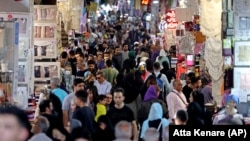
Thousands of Iranian workers have signed a protest letter sent to President Ebrahim Raisi against an increase that would see the minimum wage rise by only about half of the current inflation rate.
In the letter, which was signed by almost 20,000 workers, a request was made to immediately annul the increase and instead approve a new pay rise that would reflect rapidly rising prices.
A government resolution based on a decision of the Supreme Labor Council, which includes representatives from the government, employers, and workers, set the increase at 27 percent for minimum wage for workers after the Persian New Year on March 21.
The February inflation rate was 53.4 percent, while annual price growth in March was 63.9 percent.
While the Iranian president's office has yet to officially respond to the letter, Iranian media quoted the government's economic spokesperson as saying that there are currently no plans to change the size of the wage increase.
The new resolution raises the minimum wage for workers from 41,790,000 rials ($82) to 53,073,300 rials ($104). Inflation for the current year is projected to be in the range of 40 to 60 percent.
Hossein Habibi, a member of the board of directors of the High Council of Islamic Labor Councils, stated that the 27 percent wage increase is not in line with the first and second clauses of Article 41 of the Labor Law and is therefore illegal.
He also reported that workers have filed a complaint with the Administrative Justice Court.
Widespread protests have been held across the country against the wage increase resolution, including demonstrations by workers of the Haft Tappeh Sugarcane Agro-Industrial Complex and retirees of the Social Security Organization in the cities of Shush, Shushtar, and Ahvaz.
Unrest has rattled Iran since last summer in response to declining living standards, wage arrears, and a lack of welfare support. Labor law in Iran does not recognize the right of workers to form independent unions.
Adding to the dissent, the death in September of 22-year-old Mahsa Amini while in police custody for allegedly wearing her head scarf improperly breathed new life into nationwide demonstrations, which officials have since tried to quell with harsh measures.
The activist HRANA news agency said that more than 500 people have been killed during the unrest, including 71 minors, as security forces try to stifle widespread dissent.
Thousands have been arrested in the clampdown, with the judiciary handing down harsh sentences -- including the death penalty -- to protesters.
Written by Ardeshir Tayebi based on an original story in Persian by RFE/RL's Radio Farda
Iranian Pensioners Stage Protests Over Poor Living Conditions
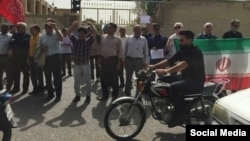
Iranian pensioners staged protests in more than a dozen cities across Iran, demanding higher pensions amid soaring prices. Protests were reported on April 9 in Tehran, Ahvaz, Mashhad, Isfahan, Arak, Qom, Shush, Tabriz, and several other cities where pensioners complained about their poor living conditions and chanted anti-government slogans. Labor protests in Iran have been on the rise in response to declining living standards, wage arrears, and a lack of insurance support. To read the original story by RFE/RL’s Radio Farda, click here.
Iranian Teachers' Union Warns Government Over Failing To Meet Its Demands
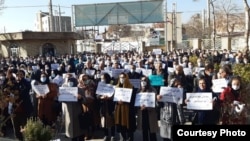
A teachers' union in Iran has warned the government that if its demands are not met, its members will take to the streets in May, adding to the social and economic unrest that has plagued the country for almost a year.
The Coordinating Council of Teachers' Syndicates said in a statement on March 19 that imprisonment, dismissal, deportation, and court sentences have failed to deter teachers from their desire to accompany the people of Iran in the direction of fundamental changes in the Islamic republic.
"The tyranny can no longer stand against The Power of Powerless", the statement added, referring to a political essay written by the Czech communist-era dissident Vaclav Havel.
In recent years, Iranian teachers have taken to the streets across the country to demand better pay and working conditions. In response, the authorities have summoned, detained, and jailed a growing number of protesters and activists, actions that have failed to stop the rallies.
The statement, published just ahead of the beginning of the Persian New Year on March 21, referred to the last year as "a year full of glory and complaints" and added that "the stance of teachers and students together will promise days full of awareness."
Unrest has rattled Iran since last summer in response to declining living standards, wage arrears, and a lack of welfare support. Labor law in Iran does not recognize the right of workers to form independent unions.
Adding to the dissent, the death in September of 22-year-old Mahsa Amini while in police custody for allegedly wearing a head scarf improperly breathed new life into demonstrations, which officials across the country have since tried to quell with harsh measures.
The activist HRANA news agency said that more than 500 people have been killed during the unrest, including 71 minors, as security forces try to stifle widespread dissent.
Thousands have been arrested in the clampdown, with the judiciary handing down harsh sentences -- including the death penalty -- to protesters.
Written by Ardeshir Tayebi based on an original story in Persian by RFE/RL's Radio Farda
- By Reuters
Saudi Arabia Could Invest In Iran 'Very Quickly' After Agreement, Says Minister
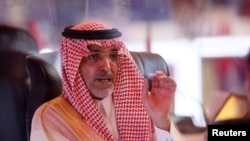
Saudi Arabian Finance Minister Muhammad Al-Jadaan said on March 15 that Saudi investments in Iran could happen "very quickly" following an agreement to restore diplomatic ties. "There are a lot of opportunities for Saudi investments in Iran. We don't see impediments as long as the terms of any agreement would be respected," Al-Jadaan said during the Financial Sector Conference in Riyadh. Iran and Saudi Arabia agreed on March 10 to reestablish relations and reopen embassies within two months after years of hostility. To read the original story by Reuters, click here.
- By Reuters
U.S. Imposes Sanctions On China-Based Network Helping Iran Access Drones

The United States imposed sanctions on a China-based network supporting Iran's efforts to procure unmanned aerial vehicles (UAVs)), the Treasury Department said on March 9. The network "is responsible for the sale and shipment of thousands of aerospace components, including components that can be used for UAV applications," the department said in a statement. The Treasury Department also imposed sanctions on 39 entities it said were facilitating Iran's access to the international financial system, describing them as a "shadow banking" network that generates tens of billions of dollars annually.
U.S. Targets Iran-Linked Oil, Petrochemical Shippers In Latest Sanctions
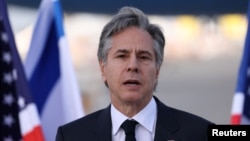
The United States said it was imposing sanctions on a number of Iranian-linked oil shippers and petrochemical firms, accusing them of violating U.S. restrictions. The moves, announced on March 2, were the latest effort by Washington to curtail Iranian oil smuggling. In a statement, U.S. Secretary of State Antony Blinken said the sanctions targeted 11 firms and 20 affiliated shipping vessels that had facilitated Iran's petroleum and petrochemical trade. Iran's mission to the United Nations, meanwhile, accused the White House of "basically repeating the failed maximum pressure policy of the former U.S. government," referring to ex-President Donald Trump's administration. To read the original story by Reuters, click here.
The Farda Briefing: Public Anger Rises As Iranian Currency Hits New Lows
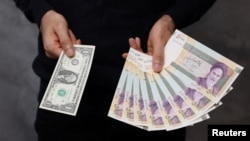
Welcome back to The Farda Briefing, an RFE/RL newsletter that tracks the key issues in Iran and explains why they matter. To subscribe, click here.
I'm RFE/RL correspondent Golnaz Esfandiari. Here's what I've been following during the past week and what I'm watching for in the days ahead.
The Big Issue
Iran's national currency, the rial, plummeted to new record lows on the country's unregulated market over the weekend, trading for 601,500 to the dollar, its lowest-ever rate. On February 28, the rial stood at 569,000 against the U.S. dollar, according to the foreign-exchange site Bonbast.com.
Iranian authorities have blamed the currency's fall on alleged attempts by the country's enemies to destabilize the Islamic republic amid several months of antiestablishment protests sparked by the September death in police custody of 22-year-old Mahsa Amini.
"After the enemy failed in its plans in the streets...it naturally heightened its pressure on the economy," government spokesman Ali Bahadori Jahromi told journalists on February 28, adding that some people allegedly behind the fall of the national currency inside the country had been arrested.
Why It Matters: The fall of the national currency, which has lost about 50 percent of its value since the beginning of the nationwide antiestablishment protests, comes amid Iran's international isolation over its brutal crackdown against demonstrators, controversial nuclear activities, and Tehran's deepening military ties with Russia, including the transfer of combat and suicide drones to boost Moscow's unprovoked war against Ukraine.
What's Next: The fall of the national currency has led to public anger among Iranians, who are already struggling to make ends meet amid soaring food prices. In recent days, many have attempted to purchase dollars at exchange offices to protect their savings, while steelworkers, firefighters, bakers, and retirees in Tehran and other cities have openly complained about rising inflation and skyrocketing prices. The deteriorating economic situation could lead to more protests, adding pressure on the establishment.
Stories You Might Have Missed
- Health Minister Bahram Eynollahi said on February 28 that "a mild poison" was the cause of the mass illnesses of schoolgirls in Iran. Eynollahi was quoted by state media as saying that determining the origin of the unnamed poison was not within the scope of his ministry. His comments came amid increased public concern over a wave of sickness that has struck some 30 girls' schools in the religious city of Qom since late November. Authorities have suggested that the incidents could be intentional, fueling allegations that religious extremists or anti-regime groups could be responsible.
- Iranians are mourning the death of Pirouz, a 10-month-old Asiatic cheetah cub born in captivity in Iran, and many are blaming authorities for failing to save him. Pirouz ,who died of kidney failure this week in a veterinary hospital in Tehran, had become a symbol of national pride and hope for the millions of Iranians who closely followed updates about his progress and shared images of him online. Two of the cub's littermates died within days of their birth in late April, but Pirouz, which means "victorious," had survived and given hope for a critically endangered species. Pirouz and growing concerns about the survival of Asiatic cheetahs in Iran were highlighted in the lyrics of Baraye, a Grammy-winning song written by Shervin Hajipour that became the anthem of the Iranian protest movement.
What We're Watching
Inspectors from the International Atomic Energy Agency (IAEA) have found uranium particles enriched up to 83.7 percent in Iran's underground Fordow nuclear site, a confidential report seen by Western news agencies said. "The report said that "discussions between the agency and Iran to clarify the matter are ongoing." The level of enriched uranium discovered is just short of the 90 percent needed for the production of nuclear weapons.
What's Next: The finding is likely to increase tensions over Iran's sensitive nuclear activities, which the country has expanded in past months. Tehran has maintained that it has not enriched uranium above 60 percent and that its nuclear program is for civilian purposes only, while acknowledging that "unintended fluctuations" during the enrichment process "may have occurred."
Kelsey Davenport, the director for nonproliferation policy at the U.S.-based Arms Control Association, said the discovery highlighted the need for additional monitoring of Iran's nuclear program. "Unlikely but not impossible that the 84 percent enriched particles were an accident. But by accident or intention, this incident underscores the critical need for additional monitoring & transparency," she said on Twitter.
The IAEA report follows comments by CIA chief William Burns, who said over the weekend that Iran's nuclear program had "advanced very far, to the point where it would only be a matter of weeks before they can enrich to 90 percent, if they chose to cross that line." Burns, however, added that Iranian Supreme Leader Ayatollah Ali Khamenei had apparently not made a decision on resuming the country's "weaponization program that we judge they suspended or stopped at the end of 2003."
That's all from me for now. Don't forget to send me any questions, comments, or tips that you have.
Until next time,
Golnaz Esfandiari
If you enjoyed this briefing and don't want to miss the next edition, subscribe here. It will be sent to your inbox every Wednesday.
- By Reuters
Iranian Currency Plunges To New Lows Amid Unrest, International Isolation
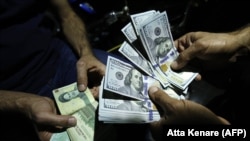
Iran's currency fell to another record low against the U.S. dollar on the unofficial market on February 26, amid the country's increasing isolation over its disputed nuclear program, human rights violations, and the supply of drones to Russia. The U.S. dollar was fetching up to 601,500 rials on Iran's unofficial market, compared with 575,000 the previous day and 540,000 on February 24, according to foreign-exchange site Bonbast.com. Iranian authorities have blamed the currency's fall on "the enemies' plot" to destabilize the country after months of unrest sparked by the death in custody of a young woman on September 16. To read the original story by Reuters, click here.
'Meat Rebellion': Price Hike Triggers Public Anger In Iran

A sudden hike in the price of red meat has triggered widespread public anger in Iran, where the troubled economy has sunk to new lows.
The authorities have responded to the criticism by playing down the price hike and cracking down on a Tehran newspaper that ran a story critical of the government.
Commodity prices have risen sharply in the Islamic republic amid months of nationwide anti-regime protests, new international sanctions imposed on Tehran, and Iran’s growing isolation.
Residents of Tehran on February 17 reported that a kilogram of boneless mutton was being sold for up to around 5,000,000 rials ($10), an almost 10 percent increase over recent weeks.
Iran’s semiofficial ILNA news agency recently reported that the price of red meat had increased by up to 90 percent during the past year, which has put it out of reach for many Iranians, who are struggling to make ends meet.
The prices of other food staples, including bread, dairy products, and cooking oil, have also increased in recent weeks as the value of the rial, the national currency, has plunged.
Currency Tumbles To A New Low
The rial plummeted to a new record low of 501,300 against the U.S. dollar on February 20, according to Bonbast.com, which gathers live data from Iranian exchanges.
The Statistical Center of Iran announced on February 22 that the one-year spot inflation rate for food and beverages was around 70 percent for the Persian month of Bahman that ended on February 19.
Many Iranians have expressed anger at the price hikes and blamed the government of ultraconservative President Ebrahim Raisi, who came to power in 2021 promising to improve an economy devastated by crippling U.S. sanctions and years of mismanagement.
Since Raisi assumed office, protracted talks between Iran and world powers over reviving the 2015 nuclear deal -- which curbed Tehran’s sensitive nuclear activities in exchange for the lifting of international sanctions -- have stalled. That has worsened the economic situation in Iran and plunged more Iranians into poverty.
Tehran has also become increasingly isolated economically and politically over its deadly crackdown on monthslong anti-regime protests at home and its alleged supply of combat drones to Russia for use in the war in Ukraine.
Iranian officials have attempted to downplay or dismiss the price hikes.
“What was published about [the price] of red meat is the result of [efforts to create a negative atmosphere] on cyberspace,” Masud Amrollahi, an official at the Ministry of Agriculture, said on February 21.
Ayub Fesahat, a municipal official in Tehran, denied that mutton prices had reached 5,000,000 rials. His remarks were refuted by dozens of Iranians who uploaded photos from supermarkets showing the increased price of meat.
Newspaper Shuttered
Amid public anger, the authorities shut down the Sazandegi daily on February 20, the same day it reported on the price hike and ran a front-page headline, "Meat Rebellion." The newspaper, which has previously been critical of the government, was accused of publishing “false content” and “disturbing public opinion.”
Akbar Montajabi, the editor in chief of Sazandegi, said the newspaper appeared to be targeted for its eye-catching headline.
“According to what we have heard, the president and the members of the government were angered by the headline, ‘Meat Rebellion,’ and as a result, the minister of education asked the supervision board to close the newspaper,” Montajabi was quoted as saying by local media on February 21.
Another daily, Hammihan, said in an editorial on February 21 that government “anger” was the reason for Sazandegi’s closure.
“Since the government has not been able to solve people’s problems and even come close to [fulfilling] its promises, it had to find a [scapegoat] to vent its anger at,” Hammihan said.
Separately, the Ministry of Agriculture on February 21 announced the launch of a plan to combat the sale of overpriced meat.
Basic Items Out Of Reach
Amrollahi of the Ministry of Agriculture said violators would be punished, without offering details. He said the average price of meat was between 2,800,000 and 2,950,000 rials.
A journalist in Tehran, who spoke on condition of anonymity for fear of retribution, told RFE/RL that an increasing number of Iranians have been forced to give up on buying basic food items, including fruit, because of rising prices.
“I went to buy a few things the other day. The prices had increased from the last time I went shopping and I couldn’t afford everything I needed. More and more people are facing the same situation,” the journalist said.
In recent years, price hikes, rising unemployment, and growing poverty have fueled street protests led by teachers, retirees, bus drivers, and other workers.
Protests over the economy preceded the anti-regime protests that erupted in September following the death of a young woman soon after she was arrested by Iran’s morality police for violating the country’s dress-code law.
Freezing Cold Puts Iran's Natural-Gas Ambitions On Ice
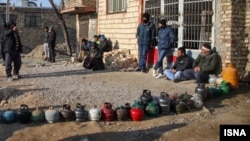
As winter approached, Iran was relishing the prospect of falling temperatures that could put Europe in a deep freeze and allow Tehran to bask in the wealth of its formidable natural-gas reserves.
A difficult winter for Europeans would offer many advantages, including leverage in protracted negotiations in Vienna aimed at reviving Iran’s stalled nuclear deal with world powers, according to the ideas floated by Iranian officials and state media.
“Wait two months, until winter arrives in Europe, to get a better deal,” the Kayhan newspaper, which often echoes the hard-line views of Supreme Leader Ayatollah Ali Khamenei, wrote as negotiators met in the autumn of 2022.
The thinking was that European nations across the negotiating table would be compelled to lift harsh sanctions against Iranian energy exports. And as Europe struggled to keep warm, Iran would not only be able to capitalize on an agreement reached in the summer to import Russian natural gas, but also be in a position to fill the void left after Russian natural-gas deliveries to Europe were restricted as punishment for the Kremlin’s unprovoked war against Ukraine.
Let Them Burn Cat Dung
Even as the nuclear talks stalled, the sanctions remained in place, and promised Russian natural-gas deliveries never materialized, the mood in Iran was still optimistic as severe cold arrived in the Islamic republic in January.
Iran would have no trouble weathering the cold, the Javan newspaper, which is close to the powerful Islamic Revolutionary Guards Corps, gloated, whereas “the French have received remittances of firewood, the Germans have gone to coal, the British are burning cat feces, and the Swedes go to work with blankets to survive this harsh winter.”
But as temperatures plunged and demand for natural gas rose at home, Iran was not in a position to deliver. Authorities instead scrambled to conserve gas, leading to the closure of some schools and public facilities. Citizens angered over higher gas prices and cutoffs held scattered protests, adding a new cause to ongoing anti-government demonstrations in Iran.
Meanwhile, the increased use of electricity overwhelmed power grids, while the burning of dirty fuels such as mazut and animal dung led to a spike in air pollution.
"Over the past few days, when the temperature reached -20 degrees Celsius...we could not provide kerosene or liquid petroleum gas to the people to use,” the semiofficial ILNA news agency quoted Mohammad Sargazi, a lawmaker from the southeastern province of Sistan-Baluchistan, as saying last month. "The conditions were so difficult that they burned firewood and animal excrement in the villages."
Failed Energy Management
Social media posts painted a picture of desperation as gas was cut off to many areas of Iran in the middle of the cold snap.
Videos showed long lines of consumers around the country waiting to get refills of bottled gas for cooking and other household needs. Young students were shown bundled up with blankets in freezing classrooms. Other images emerged of outraged Iranians taking to the streets to protest the lack of supplies and gathering outside aid offices to demand electric heaters.
But while Iranians and observers were incredulous as to how a country with such enormous natural-gas reserves could continue to find itself in such a situation, experts had a simple answer: decades of misguided strategies that have made Iran overly dependent on natural gas and put the country’s energy security at risk.
“Iran holds the second-largest natural-gas reserves in the world,” said Umud Shokri, a Washington-based energy strategist and faculty associate at George Mason University. “[But] due to high domestic consumption, mismanagement, sanctions, and a lack of financial resources and highly advanced technology, it has not been able to use this capital efficiently.”
Despite its vast reserves, Iran has been a net importer of natural gas since 2011, when it turned to supplies from Turkmenistan in an attempt to reverse its perennial energy crisis, Shokri told RFE/RL in written comments.
The administration of President Ebrahim Raisi “does not have a proper understanding of energy security, energy diplomacy, and energy transition,” which he said “requires an economy based on green and clean energies.”-- Umud Shokri, George Mason University
But the additional gas has failed to match Iran’s status as one of the world’s top five consumers of natural gas. Shortages rose to up to 300 million cubic meters of gas a day this winter, and the deficit is only growing bigger as domestic production declines, aging infrastructure deteriorates, and Iran struggles to get the foreign investment and technology it needs to turn things around.
Domestic gas production did rise considerably over the past two decades, boosted by the exploitation of the world’s largest gas field: the South Pars field, 3,000 meters below the seabed of the Persian Gulf. But like most of Iran’s gas fields, production at South Pars is expected to drop steadily without the construction of massive new drilling platforms.
Even if Iran could work out a deal today with a foreign partner with the expertise to construct such platforms -- as Qatar did on its share of South Pars -- it would cost $25 billion and take five years to see results, according to Shokri.
Dalga Khatinoglu, an expert on Iranian energy issues, said that much of the country’s natural gas is wasted as a result of gas leaks, inefficient electricity production, the lack of proper storage facilities, and the flaring off of gas that the country does not have the technology to capture.
And whereas Iran invested up to $20 billion annually into its oil and gas sector in the early 2000s, that figure was halved by 2016 and has fallen to only about $3 billion per year since, according to Khatinoglu.
Sanctions, Russia In The Equation
Iran took a big step toward injecting new life into its energy sector after it agreed to the nuclear deal with world powers in 2015. Under the agreement, some international sanctions against Iran were lifted in exchange for curbs on Iran’s disputed nuclear program. Within a year, Iran had inked a $5 billion deal with the French energy major Total, one of the few Western companies with the required expertise and technology, to further develop and install one new platform at the South Pars field.
But when the United States withdrew from the nuclear accord in 2018 and reintroduced sanctions that could penalize companies working with Tehran, Total left the project. Iran next turned to the China National Petroleum Company (CNPC) for a partnership to develop South Pars, but in 2019 the CNPC also pulled out of the project.
Next in line was Russia, which shares Iran’s interest in circumventing Western sanctions, leading to a $40 billion agreement in July with the Russian energy giant Gazprom to develop a number of gas and oil fields. But experts say that Gazprom, like the CNPC, lacks the capabilities needed to further develop South Pars.
Iran has also not received any of the 55 million cubic meters of Russian gas it was to import under the deal with Moscow.
The Russian supplies, Shokri said, would have been used by Iran both for domestic consumption and to pull off a swap under which Iran would receive Russian gas and send its own gas to Russian customers in the region, taking a cut along the way.
In the end, the deal did not pan out, in large part due to Moscow’s existing gas transit routes through Turkey, which left no excess gas to be delivered to Iran. Russian reluctance to aid a potential gas exporting rival also played a part, according to Shokri.
“Considering that Russia can no longer play an important role in Europe's energy security, the country's oil and natural-gas export market will shift to Asia,” Shokri said. “Moscow does not want Iran to be a competitor in the energy market of Asia.”
A Green Solution?
Iranian Oil Minister Javid Oji, speaking to reporters on the sidelines of a government meeting last week, touted plans to develop its energy sector.
Acknowledging that the country was in the midst of an unprecedentedly cold winter, Oji defended price hikes for natural gas, noted that millions of consumers had been spared cutoffs, and said that relief would come by the end of the year as more domestically produced supplies are injected into the country’s pipeline network.
But experts counter that such fixes are not a long-term solution.
Shokri pointed to hitches in previous workarounds, such as the loss of imported natural gas from Turkmenistan in January, when Iran failed to pay off its debts to the Central Asian nation and the supplies were rerouted to Azerbaijan.
While the focus should be on sustainable development and improving the economic welfare of the Iranian people, the energy strategist said, in Iran the “priority is just deterrence.”
The administration of President Ebrahim Raisi, Shokri said, “does not have a proper understanding of energy security, energy diplomacy, and energy transition,” which he said “requires an economy based on green and clean energies.”
But making such a transition, he said, requires huge financial resources and advanced technology.
“The tense foreign policy of the Islamic republic, along with the continuation of nuclear, missile, and drone programs, as well as interference in the affairs of other countries, [also] makes Iran unable to easily attract the necessary financial and technological resources to solve the current problems of Iran's energy industry.”
Iranian Environmentalists, Archaeologists Warn New Dam Project Will Become Pillar Of Salt
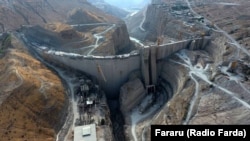
As the finishing touches are put on Iran's latest major dam project, environmentalists and archaeologists are warning that it could spell the end for an area in the country's southwest fed by the diminishing waters of the Zohreh River.
The Chamshir Dam, the country's latest massive hydropower venture, is set to go on stream in March. But as the clock winds down, critics are making a desperate bid to stop the project, warning that it will turn agricultural lands into a salty wasteland and flood newly discovered archaeological sites.
The Zohreh River, which will fill the dam's reservoir, is not what it was in the 1960s, when authorities first had designs to harness its power to produce electricity and boost irrigation in impoverished Khuzestan Province and other areas of southwestern Iran.
In recent years, seasonal droughts have at times reduced the brackish waters of the river to a trickle as it winds its way to the Persian Gulf, endangering flood-dependent flora and wildlife and contributing to water shortages that have sparked angry protests in Khuzestan.
The massive dam and adjacent hydroelectric plant, financed through a high-interest, $244 million loan from China, has been erected on the western edge of Kohgiluyeh and Boyer-Ahmad Province, and will cut off downriver Khuzestan from the natural flow of the already stressed Zohreh River to fill its reservoir.
The dam's operator has said that the reservoir will hold 2.3 billion cubic meters of water and generate 482 megawatts of hydroelectric power a year, while the authorities have sold it as a way to quench farmers' thirst for dependable water supplies to boost agricultural output.
But residents of the region, which sits on an extensive bed of gypsum and salt known as the Gachsaran Formation, do not have to look far to see the destruction wrought by the government's previous failures to manage scarce water supplies despite grand promises.
The Gotvand Dam, constructed in the 1990s and located just 250 kilometers northwest of the Chamshir project, was situated next to a large salt dome. Despite warnings, the project went ahead and ultimately left the authorities dealing with a brine-filled reservoir.
And in 2021, angry protesters who took to the streets of Khuzestan and neighboring Isfahan Province pointed to the Chadegan Dam, located 250 kilometers north of the Chamshir Dam, and other large-scale projects from the 1970s as the source of their water woes.
WATCH: Water shortages in the Iranian province of Isfahan led to mass protests in November 2021 and a brutal government response. Farmers in the province say the situation still has not improved and accuse officials of gross mismanagement.
Flood Of Criticism
Nomads have roamed the area surrounding the Chamshir project since the Sassanid Empire, the last Persian imperial dynasty before the Muslim conquest of the mid-seventh century.
More than 140 ancient sites from the Sassanid and Islamic eras lie in the basin destined to become a reservoir, 124 of them newly discovered. But with precious little time to excavate the sites, archaeologists fear that vital pieces of the country's history will soon be drowned and that modern-day nomads will be forced out.
For their part, environmentalists have strongly objected to the project, saying that aside from salt deposits the reservoir is also set on capped oil wells. They have called for it to be halted immediately until further impact studies can be conducted.
The dam's operators have downplayed the criticism and stressed the importance of pooling precious water supplies. They have also argued that concerns about high salinity are unfounded because salt deposits are buried hundreds of meters below the surface.
Mahmud Muharniya, the dam's manager, said in a December press conference that "there is no evidence of the presence of salt on the surface" and that comparisons to other controversial projects are misguided. Muharniya also said that the reservoir will be filled with waters from the winter flood season, which he said lessens the salinity of the Zohreh River and will provide higher-quality water.
Study In Open Opposition
But those arguments have done little to assuage critics' concerns, as evidenced by videos, petitions, and open letters penned by researchers and environmental authorities.
Hossein Akhani, a prominent botanist who has studied Iran's salt-imbued landscapes for decades, took to Instagram as early as 2021 to show that high salinity had already taken its toll on plant life near the new dam project.
"Your dam was so salty that it was revealed after only two days of visits," Akhani wrote in comments to a video he posted showing dead and damaged trees. "You can continue to trick ignorant officials with false claims, but the truth doesn't hide."
More recently, university professors and environmental experts have pushed back with a petition signed by more than 23,000 people declaring the Chamshir Dam a "danger," due to faults in the reservoir bed and the existence of 11 oil wells in and around the reservoir. The authors of the petition, including Akhani, also said that halting the flow of winter flood waters will disrupt the natural process of desalination and soil fertilization, and will create a dust bowl.
Other academics have listed other negatives, including the disruption of nomadic lifestyles, the dependence on Chinese investment, the loss of trust in the government, and the continuation of a flawed "American" idea of progress that began with large-scale development projects decades before the 1979 Islamic Revolution.
In an interview in late December with the Tehran-based Payam-e Ma newspaper, Mehdi Hajikazem, the civil affairs manager of Chamshir Dam, dismissed the concerns. Hajikazem said that research regarding the project was "open to everyone" and that academics who took his office up on its offer to study it came away convinced that the dam poses no threat.
"It is not my responsibility to decide whether to stop [the project]," Hajikazem said, accusing critics of simply being against the construction of dams under any conditions. "But as a patriotic Iranian, I say that this dam is really necessary."
Will Iran's Protest Movement Survive?
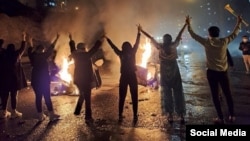
Antiestablishment protests have raged across Iran for months, despite a brutal state crackdown in which hundreds of demonstrators have been killed and thousands more detained.
Triggered by the death of a young woman died after she was arrested by Iran's morality police in mid-September, the ongoing nationwide protests have become the longest-running public rebuke of the clerical regime since the Islamic Revolution in 1979.
While the number of protests has dropped in recent weeks, anger over decades of state repression and economic mismanagement is unlikely to dissipate, analysts say, predicting that the protest movement is likely to endure as the gulf widens between the ruling clerics and Iran's young population.
Ali Fathollah-Nejad, an Iran expert with the American University of Beirut, says the country appears to be engulfed in "a revolutionary process" that started with protests in 2017-18 over economic grievances that quickly turned political.
"Any such process inherently involves phases of both relative calm and unrest," Fathollah-Nejad, who authored a study on the 2017-2018 protests for the Brookings Doha Center, told RFE/RL. "Crucially, the present revolutionary episode suggests an unbridgeable gulf between the state and society."
'We Are Not Afraid Anymore'
During the current protests, Iranians have demanded an end to the Islamic republic and targeted their anger at the most visible symbols of the clerical regime, including the mandatory head scarf for women and Supreme Leader Ayatollah Ali Khamenei.
As the authorities have increasingly used lethal force to crush the protests, Iranians have continued to express their dissent at scattered street gatherings and memorials for the victims of the crackdown. Others have sprayed slogans and hung protest signs in the streets while some have chanted anti-regime slogans from their rooftops and windows at night.
Iranian security forces have killed at least 476 protesters, including over 60 children, since the rallies erupted, according to rights groups. Over 15,000 people have been detained. Two young men have been publicly executed for their involvement in the protests.
"Nothing will be the same, we have found our voice," a female protester in Tehran, who spoke on condition of anonymity for fear of retribution, told RFE/RL. "Even if this revolution does not achieve its goal in the near future, we are not afraid anymore, we know how to fight and resist."
A journalist in the Iranian capital says the protests pose a significant threat to the establishment, although he argues that the regime is not in imminent danger of collapsing. There have been no visible cracks within the ruling elite and armed forces, while the protests have yet to bring the economy to a complete halt.
"The more the [political hard-liners] have tightened the Islamic republic in the past 25 years, the more society has resorted to protests."
"They'll do all they can to stay in power, so for now I expect more tensions and growing discontent particularly due to the situation with the Internet and [the national currency]," he said, referring to increased online censorship and the plummeting value of the rial against the U.S. dollar.
Karim Sadjadpour, a senior fellow at the Washington-based Carnegie Endowment for International Peace, said history had showed that "for popular uprisings to be viable they must attract a critical mass, and in order to attract a critical mass they must be perceived as viable."
"It's clear that many Iranians, given their ongoing dissent, believe this popular uprising could succeed in unseating the Islamic republic," he added. "It's also important that Islamic republic officials come to believe that they're on a losing team. We haven't reached either of these tipping points yet."
Prominent Tehran-based sociologist Hamid Reza Jalaipour says the gap between the establishment and the rest of the population is "significant." But he suggests that the majority of Iranians are still unwilling to participate in protests designed to overthrow the regime.
"Currently, 15 percent of society are supporters of the establishment and 15 percent are serious protesters," Jalaipour said in comments published by Iranian media in October. "Seventy percent of the population is silent."
He said the establishment's failure to listen to people's demands over the years has contributed to the current wave of protests.
"The establishment did not learn lessons from [past protests]," he said. "The more the [political hard-liners] have tightened the Islamic republic in the past 25 years, the more society has resorted to protests."
Iran Replaces Central Bank Chief As Currency Sinks Further
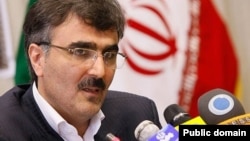
Iran replaced the head of its central bank on December 29 as the country's currency, the rial, continued a sharp decline amid economic troubles aggravated by a lack of progress on nuclear negotiations with the West and months of civil unrest that continues to rock the country.
The government appointed Mohammad Reza Farzin as the new head of the central bank during a cabinet meeting, Iranian state TV reported.
It said the resignation of the current head of the central bank, Ali Salehabadi, was accepted before the appointment of Farzin, who has served as CEO of Bank Melli Iran since last year.
Iran's president stressed the importance of controlling the value of foreign currencies during the cabinet meeting, IRNA said.
The Iranian currency reached a new all-time low against the U.S. dollar on December 28, with one U.S. dollar worth 440,000 rials, compared to 360,000 rials one month ago, according to the foreign-exchange site Bonbast.com.
Iranians have been scrambling to convert their savings into foreign currencies, especially U.S. dollars and euros, amid a worsening economic situation prompted by international nuclear sanctions and political instability triggered by the current wave of protests sparked by 22-year-old Mahsa Amini's death after her arrest by the morality police in September for "improperly" wearing a mandatory head scarf.
Before the beginning of the current wave of protests, the rial was valued at approximately 298,200 to the U.S. dollar.
The weakening of the currency has also been accelerated by dwindling hopes for the revival of a landmark 2015 nuclear deal between Tehran and global powers that had scrapped most international economic sanctions in exchange for limits to Tehran's nuclear program.
Former U.S. President Donald Trump withdrew from the agreement, known as the JCPOA, in 2018, reimposing harsh sanctions on Iran and prompting Tehran to resume nuclear activities.
Negotiations to revive the deal were resumed in April but have since lagged amid Western accusations that Iran was continuing its nuclear enrichment activities.
On December 28, Iranian Foreign Minister Hossein Amir-Abdollahian met in Muscat with the Omani Sultan Haitham bin Tariq, amid speculation that Muscat has taken a role in restoring the deal.
However, German Foreign Ministry spokesman Christofer Burger stated on December 28 that Berlin, one of the signatories of the agreement, sees no reason to return to the negotiations.
Tehran insists its nuclear program has only civilian purposes, but the West fears it could be moving closer to being able to build a nuclear weapon.


